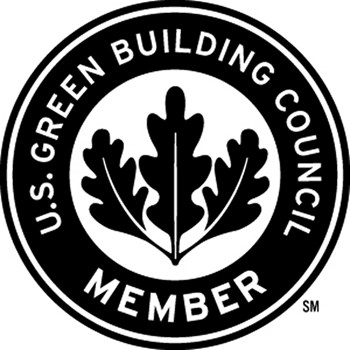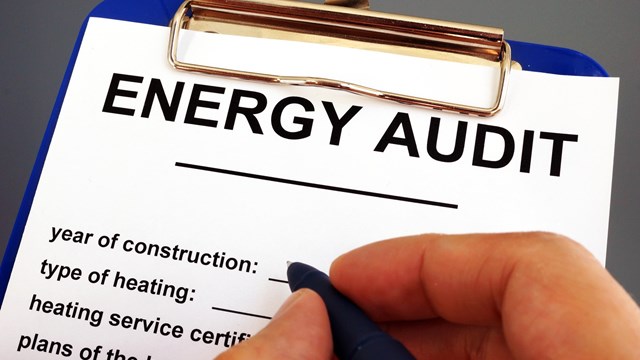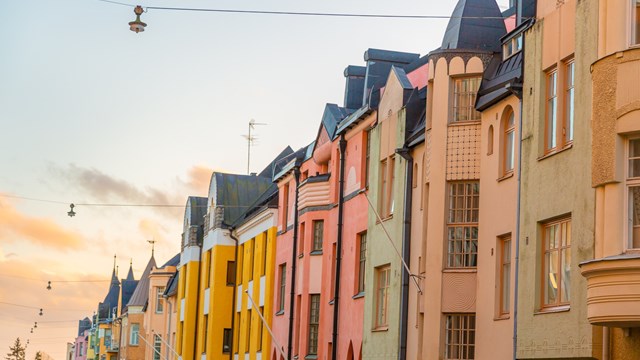
The concept of 'greening' has become so firmly entrenched in our national discourse over the last few years, it's hard to imagine a time when recycling, clean energy, and reducing our carbon footprint were novel ideas with just a few voices championing their development. But that's exactly what the U.S. Green Buildings Council (USGBC) has been doing since the organization’s founding in 1993.
This non-profit organization, based in Washington, D.C., emphasizes environmentally friendly construction and design through education, research and advocacy. The USGBC has an ambitious goal, spelled out in its mission statement: Green buildings for everyone within a generation. According to the group's website, the USGBC is a 501(c)(3) nonprofit organization “Committed to a prosperous and sustainable future for our nation through cost-efficient and energy-saving green buildings. USGBC works toward its mission of market transformation through its LEED green building certification program, robust educational offerings, a nationwide network of chapters and affiliates, the annual Greenbuild International Conference & Expo, and advocacy in support of public policy that encourages and enables green buildings and communities.”
“Our whole mission is in market transition,” says Judith Webb, a communications strategist for the USGBC. “We will run ourselves out of business because eventually, every building will be green.”
Why Go Green?
In a vertical city like New York, with the majority of people’s time spent indoors, a clean, healthy indoor environment is essential to everyone’s well-being.
“Green buildings are healthier places,” says Webb. “We want to create human habitats that are non-toxic, with clean lighting, good air and acoustics, and so on. The building type doesn’t matter, [because] we spend 90 percent of our time indoors. Shouldn’t we do everything we can to make those spaces as healthy as they can be?”
And when residential and commercial buildings go green—or start incorporating green ideas and practices— the result yields not only a healthier indoor environment, but a reduction in energy use as well. Green buildings are also beneficial to the outdoor environment.
“When you make the air cleaner and fresher, you can also reduce the energy you use,” says Webb. “You can install fixtures that use less water and proactively recycle waste so it doesn't end up in a landfill. Those are the kinds of issues we’re trying to get people to make better decisions about.”
Though it’s been an ongoing push, going green seems to have finally caught on with the general public. Why the sudden change?
“What changed was the price of oil, the price of energy, and global warming,” says Webb. “All of a sudden you’ve got a business case—a family budget reason to do all these things. And in addition, it’s good for the environment. Once people finally got there, they were motivated to make a change because it was financial, and then they realized the value and benefit.”
But as with anything that becomes ubiquitous, going green is not a single straight line from A to B, before-and-after, bad-to-better. The process is subject to something Webb calls “greenwashing.” She cautions people to be mindful of products, service providers and companies claiming to be “green” and environmentally-friendly while not really changing their practices at all, or even doing things that might be harmful to both indoor and outdoor environments.
The LEED Program
The organization’s Leadership in Energy and Environmental Design (LEED) program is setting the standard when it comes to green design and building. Through its third-party certification program, the USGBC has created criteria for what makes a truly green building—and it’s not just simply installing energy efficient light bulbs.
According to Webb and the USGBC, “The LEED® green building certification program is a voluntary, consensus-based national rating system for buildings designed, constructed and operated for improved environmental and human health performance. LEED addresses all building types and emphasizes state-of-the- art strategies in five areas: sustainable site development, water savings, energy efficiency, materials and resources selection, and indoor environmental quality. LEED gives everyone a common language or metric against which to develop properties. We have a third party who comes in and certifies that it is a green building.”
“It is more than installing CFLs and bamboo flooring,” Webb continues. “It’s not just using energy efficiently. It’s also water, materials, where you site the building, the air quality—all of those things within our rating system set a metric against which people can measure which side of the line they’re on. It’s rigorous, and you have to show documentation to someone who then evaluates it.”
The LEED program has created a benchmark, says Webb, and now that it’s in place, the results are measurable and have proven to be effective. “Because we have all these buildings that have been through the process, we can prove that if you do all these things, these are the results we can get. It’s replicable. Now we can go back and measure buildings on that standard, and know that they will save at least 30 percent in energy, have better air quality, and so on.”
USGBC in NYC
Though the U.S. Green Buildings Council is a national organization, it has more than 78 local chapters to help the organization meet its goals throughout the country. New York City has its own chapter, the Urban Green Council, found on the web at (www.urbangreencouncil.org).
Urban Green was formed in 2001 to lead the advancement of sustainability in the urban built environment, and to serve as a model for other cities, through education, advocacy, collaboration and research. The chapter is governed by a 15-person board elected by its active members. The board works to establish the chapter’s vision and oversees its programs and activities. In addition, it is responsible for maintaining the chapter's financial health and legal compliance. According to the chapter's literature, “Recognizing that urban life leaves a smaller footprint than the suburban alternative, we envision cities that coexist in harmony with their natural environment and contribute to the health and well being of all.” The present chair is Related Management’s Jeff Brodsky.
According to Russell Unger, Urban Green's executive director, the chapter is funded by contributions from foundations, its 1,200 members, and over 50 corporate sponsors.
“We’ve grown dramatically,” says Unger. “When I started, I was the only full-time staff member. Now, we have a full-time staff of ten, including one of the city’s top engineers, an architect and an interior designer—arguably the greatest concentration of green building expertise of any non-profit on the East Coast.”
Going green is especially relevant in New York City, Unger continues. “The multifamily building sector in New York is one of the largest sources of greenhouse gas emissions and is the second-largest building type in the city,” says Unger, adding that co-op and condo boards have a unique opportunity to embrace the greening of their buildings. People who choose to be on their boards have a social conscience, because they’re giving free time to be involved. They are a perfect audience for greening,” says Unger.
One of the issues facing New York’s residential buildings include antiquated steam heating systems that are neither cost-effective nor energy efficient. “You see a lot of open windows in the winter because heating systems tend to be steam heat, and there are different ways to improve on those,” says Unger.
To combat ignorance and promote more environmentally sound, sustainable methods, materials, and policy, Urban Green provides a range of educational and networking events for its members and the green building community at large, as well as conducting research and advocating for greener legislation and construction. The group's website and newsletter reaches more than 14,000 readers, largely comprised of professionals in the architecture, engineering, design, construction, and real estate fields.
The Urban Green Council has an educational component as well. “With resources we have increased a lot of initiatives,” says Unger. “One of most important is developing curricula for teaching building trades and contractors about green building, including general and foundational information and information that’s specific to their expertise.” The New York chapter also maintains a web-based green building resource center to provide answers to commonly asked questions about sustainability and greener development.
“All these areas have different needs and require different answers,” says Unger, adding that the chapter is translating the desire of the marketplace to go green, and determining how to train people to understand and apply the LEED rating system.
Although the USGBC New York chapter’s goal of transforming the non-green building market into a green building market is still some years off, its efforts have been paying off. The New York development community has been receptive to LEED and green building. LEED-certified buildings display their certification proudly, prospective homebuyers are as likely to ask about a building's green roof as they are about its health club, and brokers now make a point of noting a building's environmentally-friendly features in sales materials.
Whether you’re making small changes by cutting down on energy usage, or going green in a big way with a newly constructed, LEED-certified building—its likely there’s always more that can be done, and the Urban Green Council is here to help.
Stephanie Mannino is a freelance writer and a frequent contributor to The Cooperator. Associate Editor Hannah Fons contributed to this article.






Leave a Comment